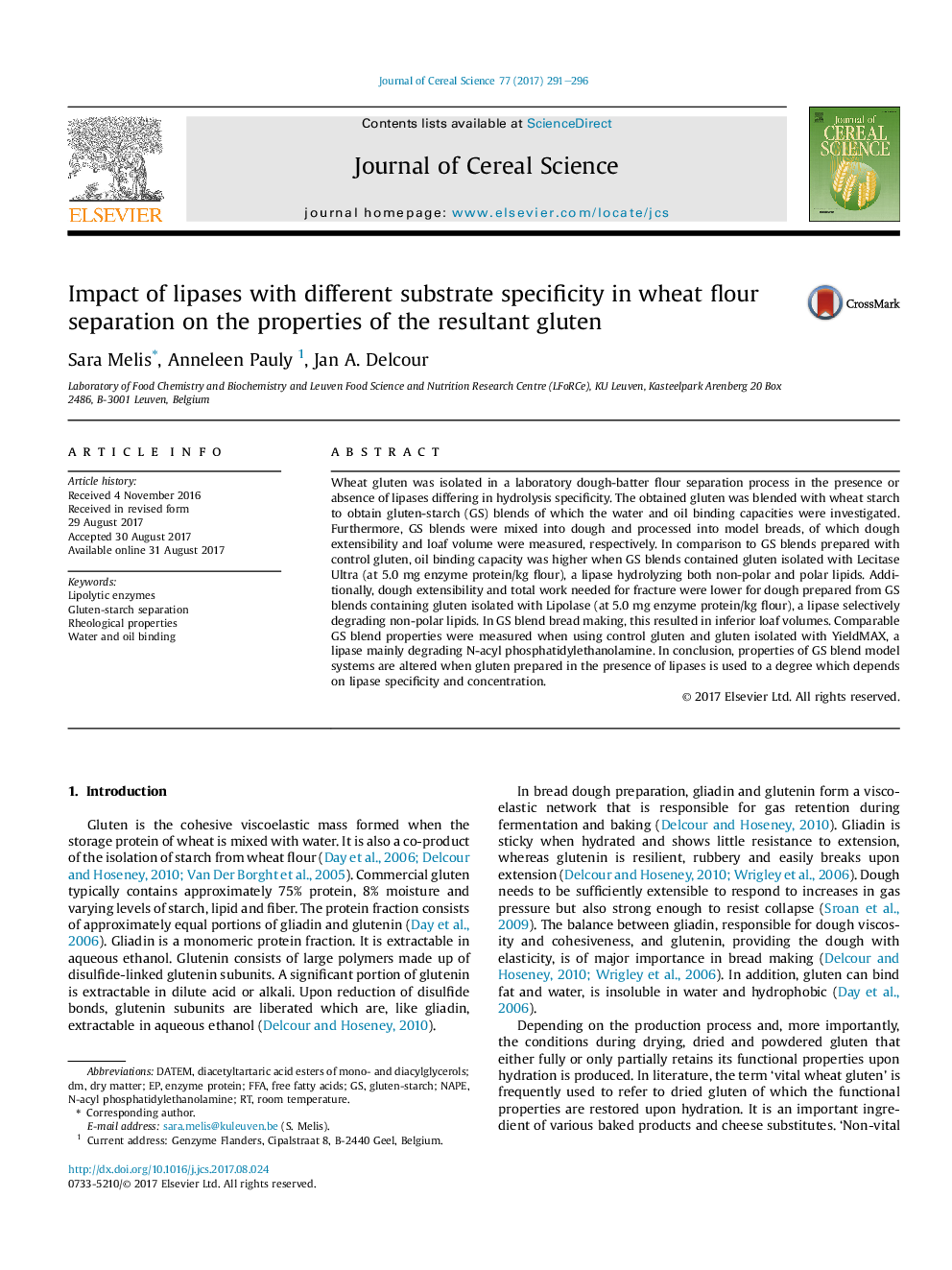| Article ID | Journal | Published Year | Pages | File Type |
|---|---|---|---|---|
| 5762432 | Journal of Cereal Science | 2017 | 6 Pages |
â¢Gluten isolated in a dough-batter process with addition of lipases.â¢Gluten-starch (GS) blends containing gluten isolated with lipases were made.â¢GS blends with Lecitase Ultra gluten display increased oil binding capacity.â¢GS blends with Lipolase gluten have inferior dough extensibility.
Wheat gluten was isolated in a laboratory dough-batter flour separation process in the presence or absence of lipases differing in hydrolysis specificity. The obtained gluten was blended with wheat starch to obtain gluten-starch (GS) blends of which the water and oil binding capacities were investigated. Furthermore, GS blends were mixed into dough and processed into model breads, of which dough extensibility and loaf volume were measured, respectively. In comparison to GS blends prepared with control gluten, oil binding capacity was higher when GS blends contained gluten isolated with Lecitase Ultra (at 5.0Â mg enzyme protein/kg flour), a lipase hydrolyzing both non-polar and polar lipids. Additionally, dough extensibility and total work needed for fracture were lower for dough prepared from GS blends containing gluten isolated with Lipolase (at 5.0Â mg enzyme protein/kg flour), a lipase selectively degrading non-polar lipids. In GS blend bread making, this resulted in inferior loaf volumes. Comparable GS blend properties were measured when using control gluten and gluten isolated with YieldMAX, a lipase mainly degrading N-acyl phosphatidylethanolamine. In conclusion, properties of GS blend model systems are altered when gluten prepared in the presence of lipases is used to a degree which depends on lipase specificity and concentration.
